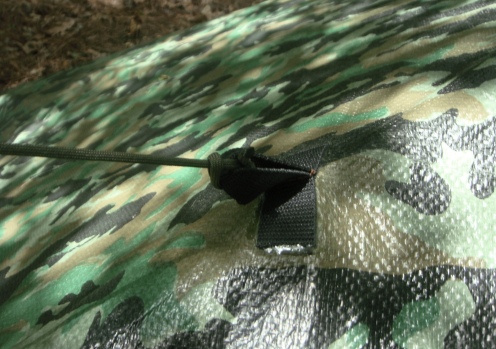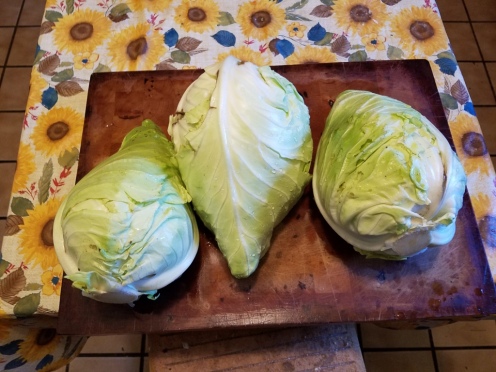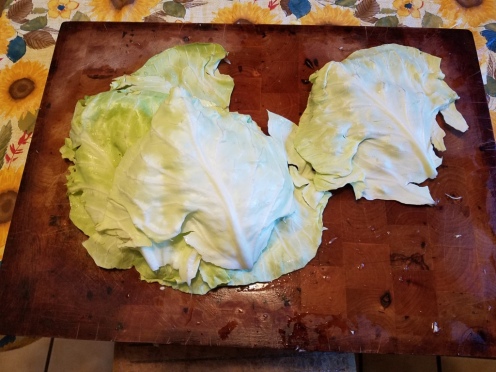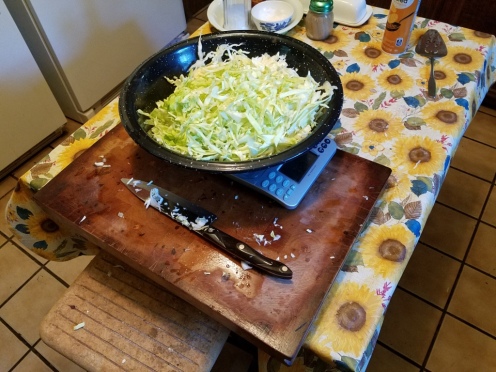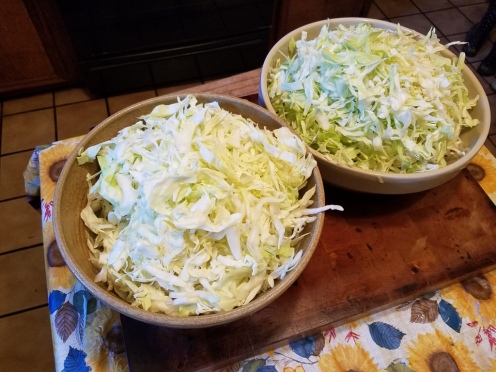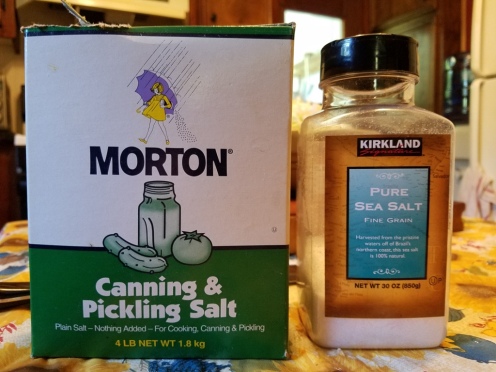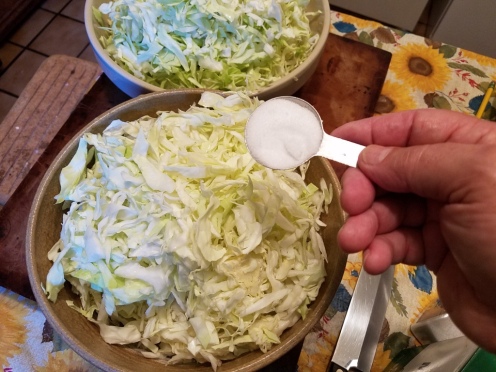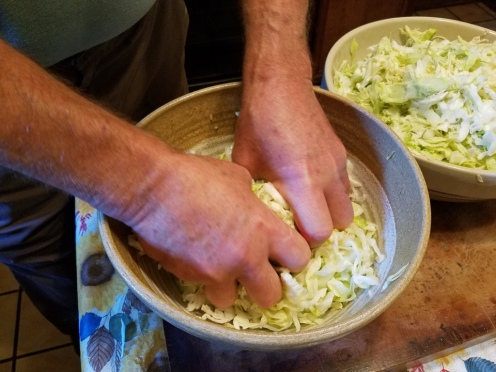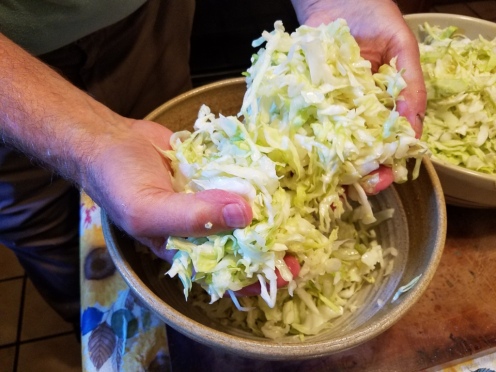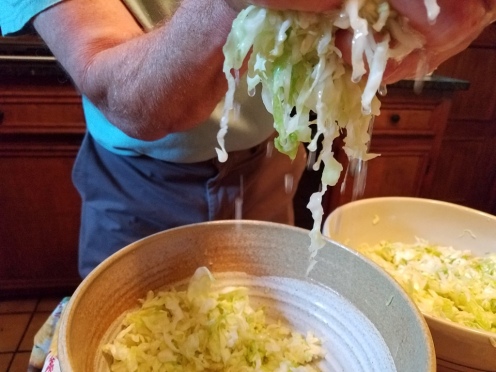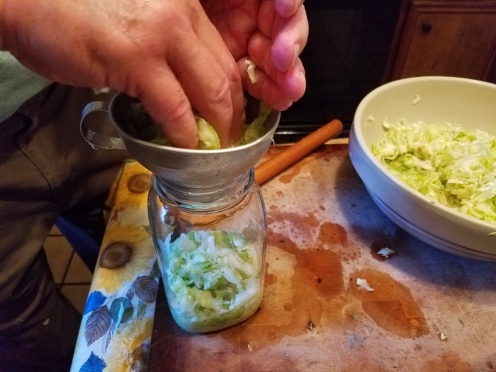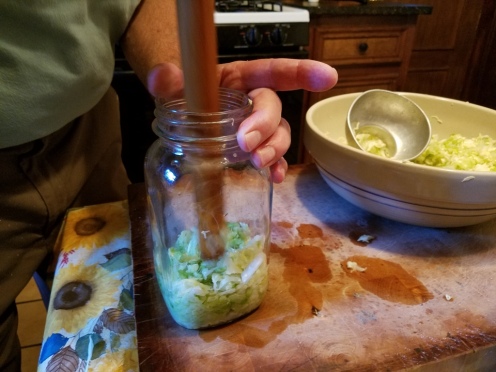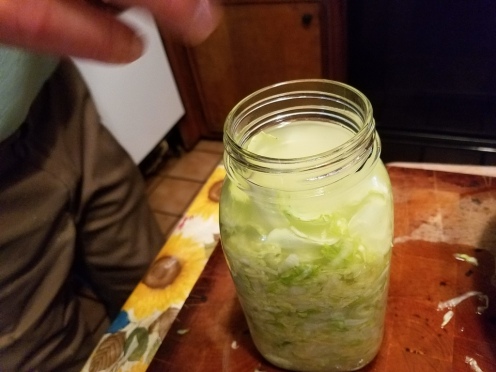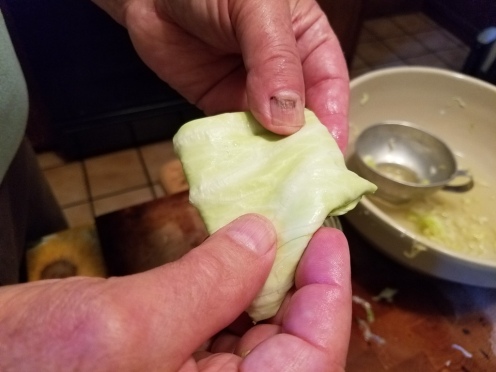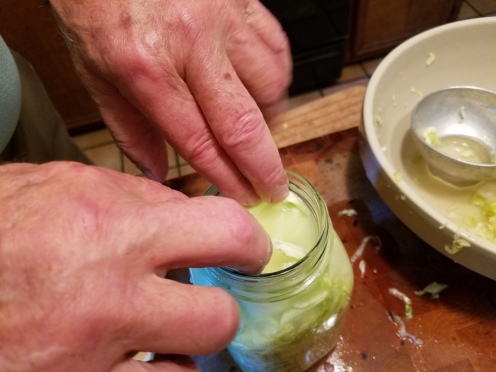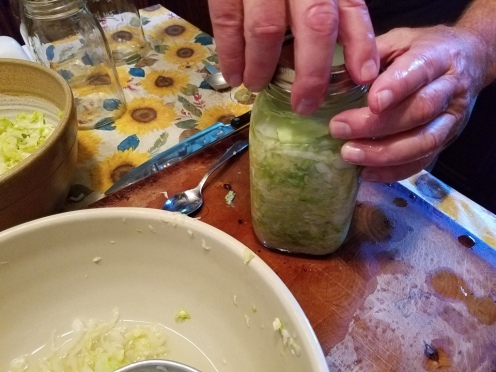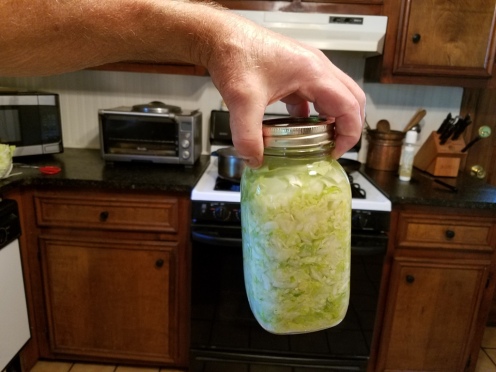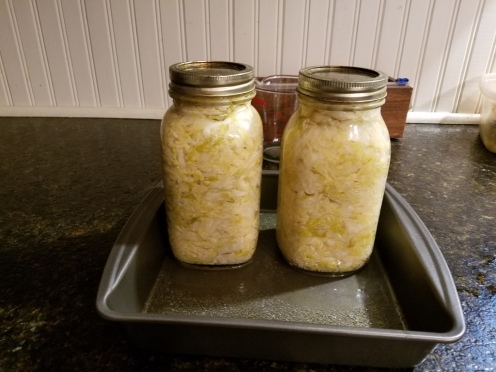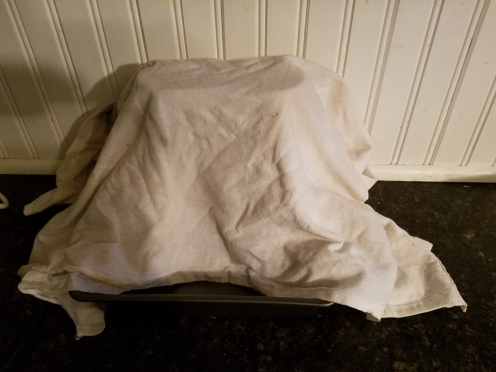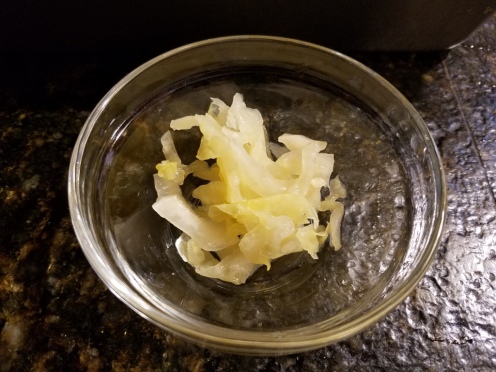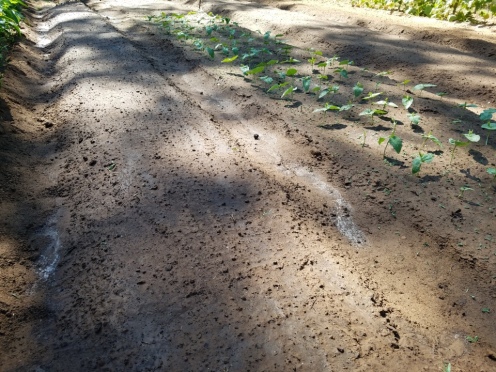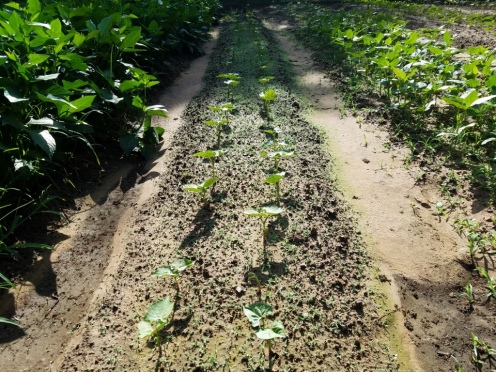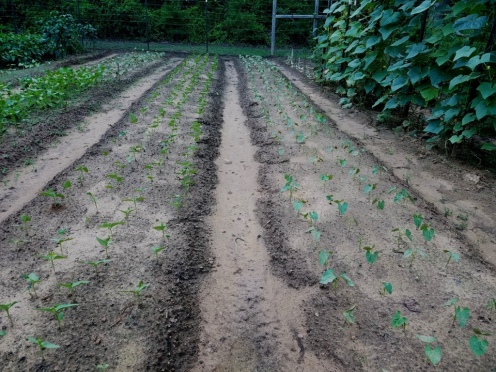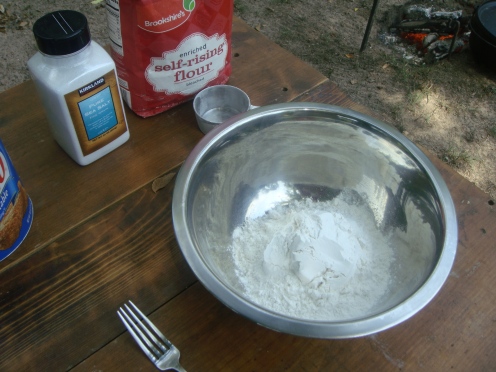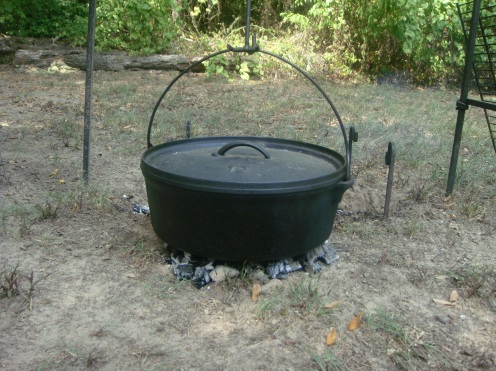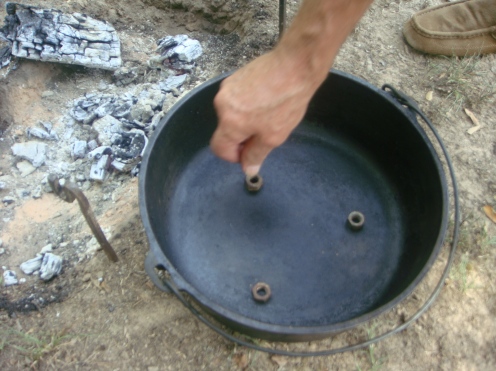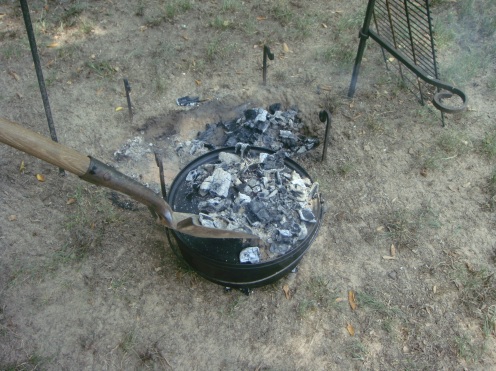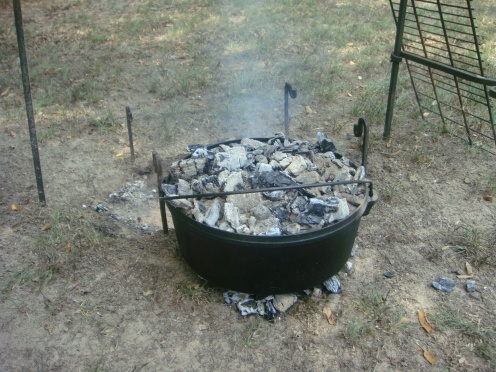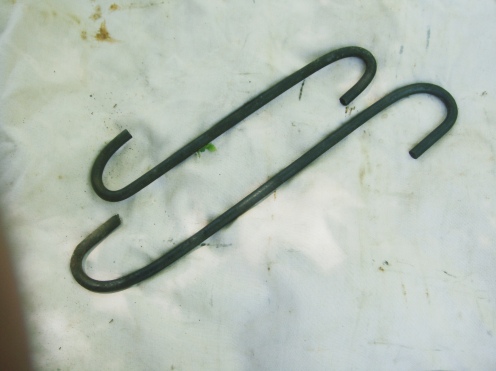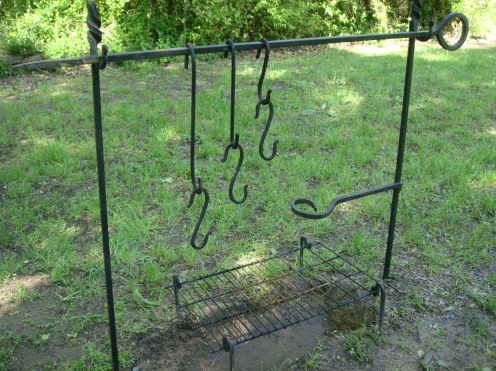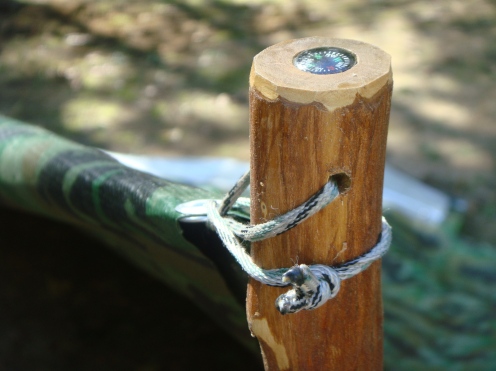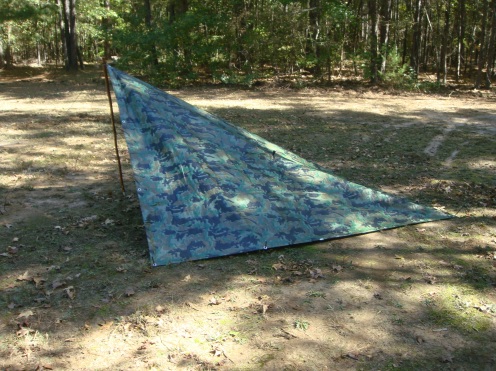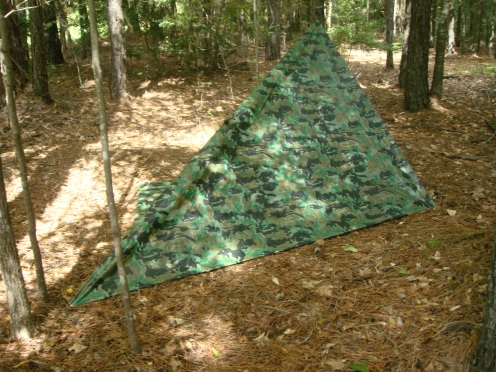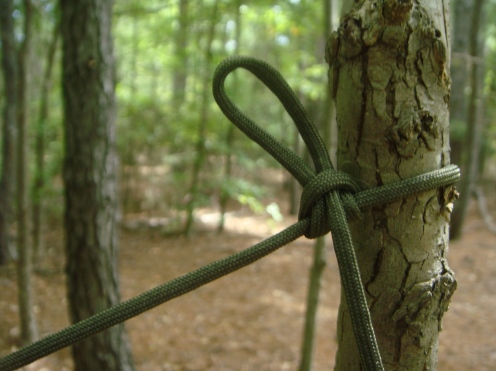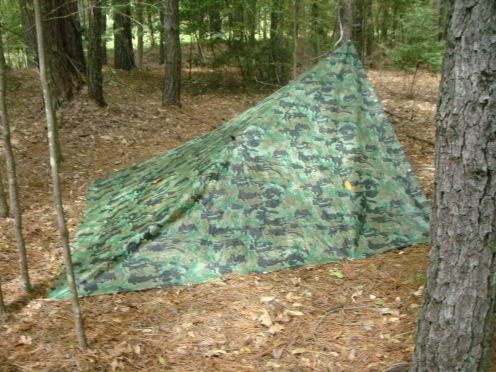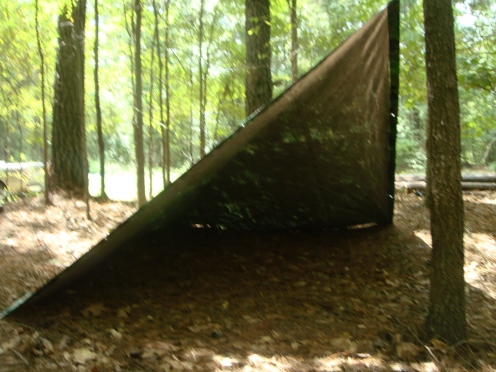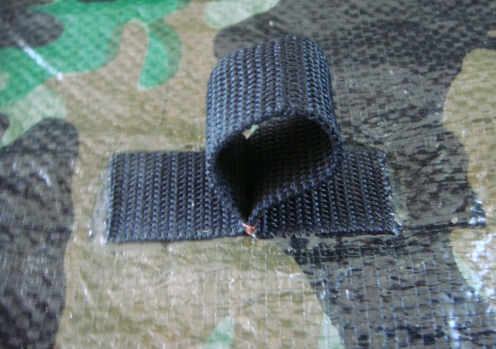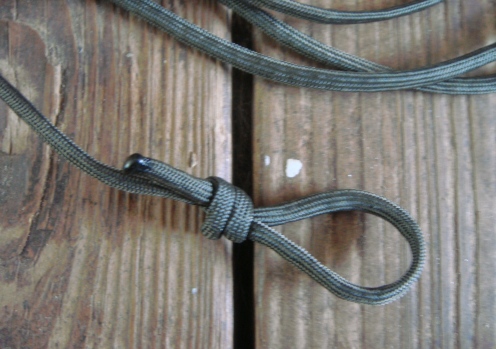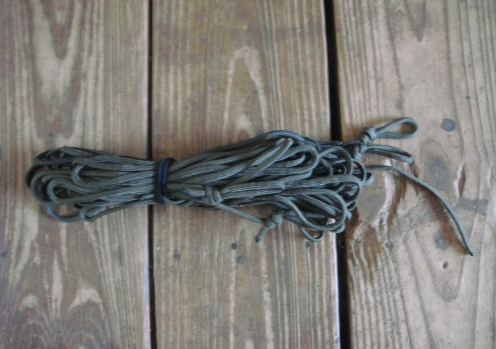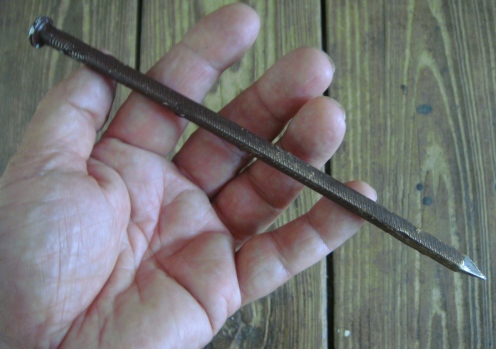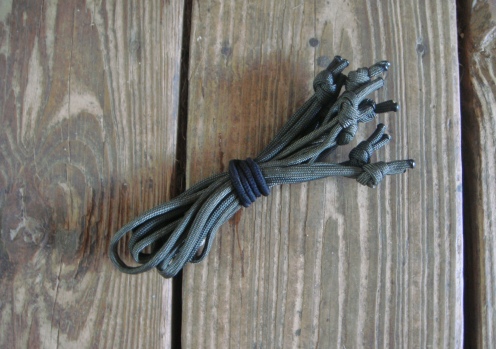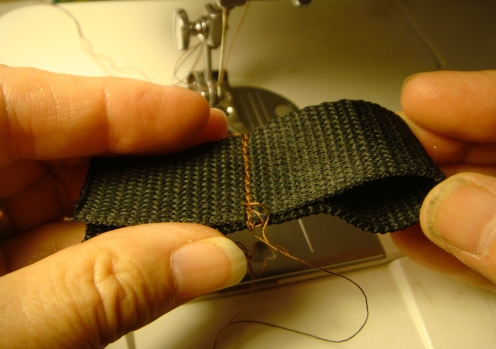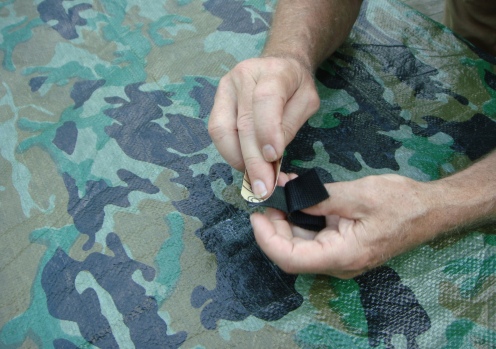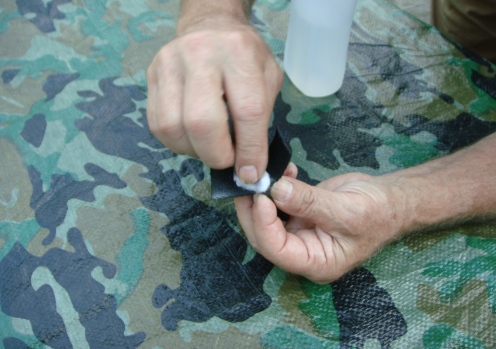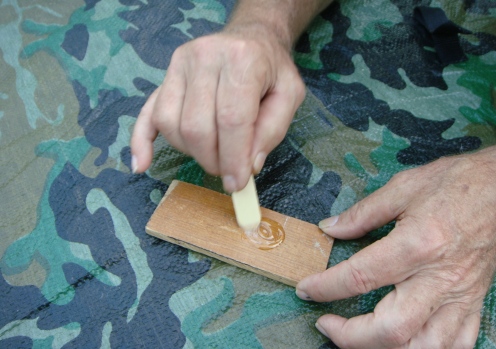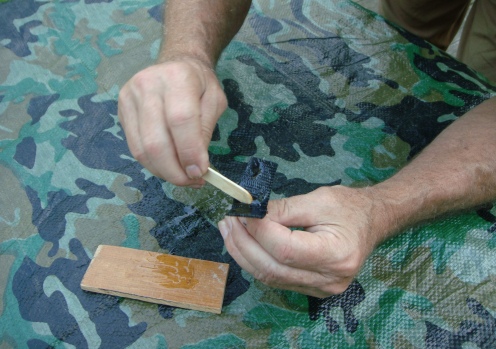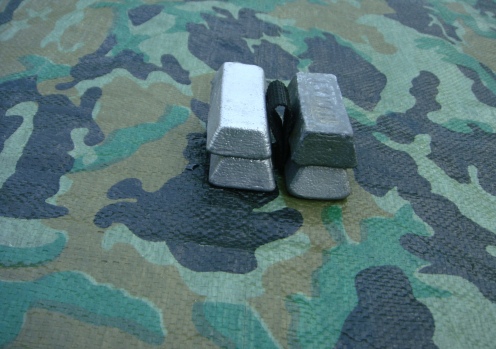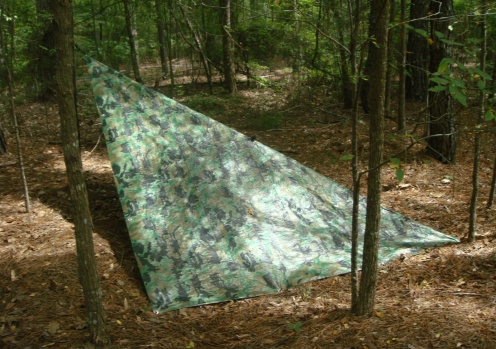Prior to the invention of canning and refrigeration, fermentation was one of the most common methods used to store vegetables. Fermentation of vegetables is currently experiencing a Renaissance among young people who have discovered that fermented vegetables are tasty, healthy, and easy to prepare. Fermenting vegetables is a valuable skill for homesteaders, preppers, and survivalists to learn. Fermenting is actually easier, and requires less equipment than canning. It should be noted that fermentation is not a long term storage technique. You don’t ferment vegetables and plan on storing them for years. Fermentation is a method used to store vegetables from a Fall harvest for use until the first Spring crops are ready for the table. We’re talking about a matter of months; not years.
Canning, as most of you know, requires a lot of equipment. It requires canning jars, lids, rings, a water-bath or pressure canner, salt, and in many cases vinegar and sugar. Fermenting requires only a glass or ceramic container and salt.
Fermentation takes place when the good bacteria known as lactobacillis converts the sugar in vegetables to lactic acid which preserves the vegetables. Lacto-fermentation is actually a 2 part process. The vegetables to be preserved are placed in a mixture of salt and water called brine. The salt-water does not affect the lacto-bacillis which goes to work on the vegetables. The salt-water does affect the bad bacteria by killing it off so the vegetables don’t spoil. After a few days the lacto-bacillis will have converted enough sugar to lactic acid to keep the vegetables preserved.
So, let’s get into how you do this. The first thing that you will need is the vegetables that you are going to ferment. I happened to have a few small heads of cabbage left in my garden, so I decided that I would turn them into some old-time fermented sauerkraut.
Before you shred your cabbage, remove several of the large outer leaves and set them aside for later use.
If you are making kraut you need to shred up the cabbage. You can do this with an old-time kraut cutter, a Mandolin, or a butcher knife. I’m only making a couple of quarts so I am using a butcher knife to cut the cabbage into quarter inch slices.
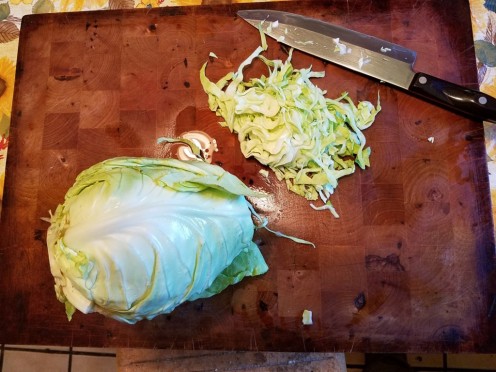 When your cabbage is shredded you need to place it in a large bowl. I would recommend a glass, ceramic, or stainless steel bowl.
When your cabbage is shredded you need to place it in a large bowl. I would recommend a glass, ceramic, or stainless steel bowl.
Now you need to add your salt. Don’t use iodized salt. It will give your vegetables a funky taste. The best salt to use is pickling salt, or you can use kosher salt or non-iodized sea salt.
For kraut, I use one tablespoon of salt per pound of cabbage. There is a lot of info about fermenting on the internet. I recommend that you do some research on the question of how much salt to use with different vegetables. Personally, I always err on the side of too much salt. It’s simple enough to rinse your finished vegetables in fresh water before you eat them, and this will remove any excess salt.
So, sprinkle the salt over the top of your cabbage and then use your hands to gently massage the salt throughout the cabbage. The salt will, almost immediately, begin drawing water from the cabbage. Set the cabbage aside and let the salt do its work.
Check the cabbage every half-hour to see how much liquid it has produced. Squeeze a handful to see if it drips then toss the cabbage a little with your hands and set aside again.
At some point, after 2 to 4 hours, squeezing the cabbage will cause liquid to rain out of it. When this happens your cabbage is ready to go into jars.
The cabbage needs to be packed very tightly into the jars, so you will need a wooden spoon or a section of dowel rod for a packing stick.
As the cabbage is packed into the jars it will release more moisture. It should actually release enough moisture to keep the cabbage covered. In this case I actually had to pour a little liquid off as the jars filled up. Keep adding cabbage until the jar is full to just below the shoulder (the curved in part at the top) of the jar.
Now is where those whole cabbage leaves that you saved come into use. You want to take a leaf or two and fold it into a flat plug that is larger than the mouth of the jar.
This plug is shoved down into the jar so that it wedges under the shoulder. The plug should be beneath the brine and should hold all of the shredded cabbage down under the brine. Remember, if the cabbage and plug stay below the liquid, only the good bacteria will live, and the cabbage will ferment.
When the plug is inserted you can put a lid on the jar. Leave the lid a little loose. As the cabbage ferments, gas will be produced, and the contents of the jar will expand a little. You want the lid loose enough for the gas and possibly a little liquid to escape.
It’s a good idea to set your jars in a shallow pan in case they over-flow a little.
You also need to either cover the jars with a cloth or put them in a dark place while they ferment
Check the jars every few days. If they get a white fuzzy growth on top, throw them out. If they get a little white growth on top that is not fuzzy, spoon the white stuff out and recap and cover the jars. Be sure to keep all of your vegetables, including the plug, under the liquid.
After the cabbage has fermented for about a week, remove the plug and take out a fork full of cabbage. Rinse this fork full under a little warm water to remove the excess salt and give it a taste. In the case of these jars they were not quiet fermented to my taste so I let them ferment for three more days.
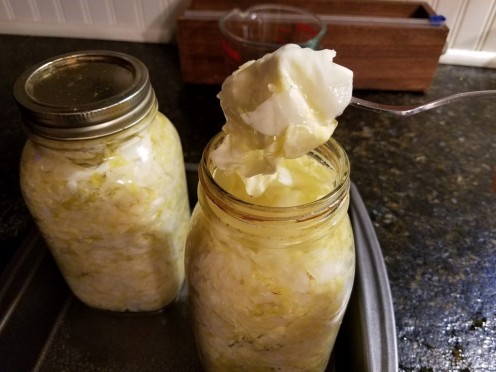 After ten days it tasted like good kraut to me, so I put the jars in the refrigerator. When the kraut is placed in a cool environment, like a root cellar, the fermentation will slow way down. When placed in a cold environment, like a refrigerator, fermentation will nearly stop altogether.
After ten days it tasted like good kraut to me, so I put the jars in the refrigerator. When the kraut is placed in a cool environment, like a root cellar, the fermentation will slow way down. When placed in a cold environment, like a refrigerator, fermentation will nearly stop altogether.
 I rinse the kraut as I use it to remove excess salt. I also do not heat the kraut as this will kill the pro-biotic bacteria that make fermented vegetables so healthy.
I rinse the kraut as I use it to remove excess salt. I also do not heat the kraut as this will kill the pro-biotic bacteria that make fermented vegetables so healthy.
I was recently buying some groceries at Wal-Mart when I came across one pound bags of cranberry beans for 92 cents U.S. Cranberry beans are a kind-of pinto looking bean, only the markings are a distinctive cranberry red with some of the beans being almost solid red. 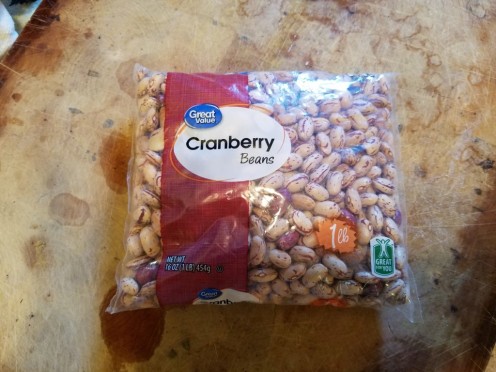
 I like to experiment with different types of heirloom plants, and I had actually looked at cranberry beans on an heirloom seed website. The website was selling their cranberry beans for $3.00 U.S. for 40 beans. This seemed a little rich for my taste so I took a pass on them. And here I am now looking at a pound of cranberry beans for 92 cents. Now 40 beans this size weigh just a hair less than one ounce (28 grams), so a one pound bag should contain around 640 beans. That means my $3.00 dollars will buy me 40 beans from the website or 1920 beans from Wal-Mart, so I figured, “What the heck, I’ll give it a try.” I remember when I was a kid, if my dad was going to plant black-eyed peas, he’d just buy a bag of peas at the grocery store and plant them. So I was hoping this would still work for me 60 years later.
I like to experiment with different types of heirloom plants, and I had actually looked at cranberry beans on an heirloom seed website. The website was selling their cranberry beans for $3.00 U.S. for 40 beans. This seemed a little rich for my taste so I took a pass on them. And here I am now looking at a pound of cranberry beans for 92 cents. Now 40 beans this size weigh just a hair less than one ounce (28 grams), so a one pound bag should contain around 640 beans. That means my $3.00 dollars will buy me 40 beans from the website or 1920 beans from Wal-Mart, so I figured, “What the heck, I’ll give it a try.” I remember when I was a kid, if my dad was going to plant black-eyed peas, he’d just buy a bag of peas at the grocery store and plant them. So I was hoping this would still work for me 60 years later.
There are a couple of things that could go wrong with this plan. For one, the beans could be hybrids that would not reproduce true to type, or they could be genetically modified to produce sterile seeds that won’t germinate. I reasoned that both of these scenarios were pretty unlikely. I haven’t really ever heard of hybrid beans. They may exist, but it seems that a little selective breeding over the years has made beans pretty much perfect, so what are the advantages of hybridizing them? As for genetic modification with a terminator gene, I think that this is usually reserved for big money crops like corn, wheat, rice, and soybeans. I don’t think cranberry beans are that big in the agri-biz world. In fact, these at Wal-Mart are the first ones I’ve seen outside of a seed catalogue. So, long story short, I think these are probably a genuine, non-hybrid, non-GMO, heirloom seed. Time will definitely tell.
The second thing that could go wrong is that these beans may be pretty old which could lower their germination rate. Unless seeds are properly stored; which is to say cold, dark, and dry; their germination rate will decrease each year until at some point it’s not worth the effort to plant them. Another thing that could affect the germination is if the seeds have been exposed to high heat. One advantage of buying from a reputable seed company is that the seed will, most likely, be fresh and properly stored to assure good germination. But, as you can tell from the numbers above, premium seeds mean premium prices.
The only way to tell if the seed is going to germinate is to plant some and see if it germinates, and the only way to see if it is heirloom seed is to raise a crop and plant seed from it next year to see if it will produce another crop. If it works I get a lifetime supply of cranberry beans. If it doesn’t work, I’m out 92 cents and a little labor.
So I took my Wal-Mart cranberry beans and planted 80 of them. I planted them ¾” deep and about 6 to 8 inches apart in 2 rows that are about 8 inches apart. I tamped the soil down over them, and watered them in.
The first beans started breaking ground on the 6th day after planting. On the 9th day the beans were up and growing. I had 67 beans that germinated. If my math is right that’s a germination rate of about 84%.
This looks to be about the same as the pink-eyed purple hull peas (on the left below) that I planted from saved seed, and maybe a little better than the Kentucky wonder beans (on the right below) that I bought at the feed store.
So, the first hurdle has been cleared. The beans germinated. Now I need to see if they produce any beans. I’ll up-date this post in a couple of months, and hopefully will include pictures of me picking cranberry beans.
I recently watched a video called “Thirty Things Your Iphone has Replaced.” It’s pretty interesting to see how many things that used to be common accessories in everyone’s homes 25 years ago, have been made obsolete by the smart phone. One good example would be that most families used to have a set of encyclopedias. Who buys encyclopedias now that you can go on your internet connected smart phone and look up anything you want?
But, this video got me to thinking about the flip-side of the smart phone as an information multi-tool. What would happen if your smart phone was suddenly rendered useless? What items would you wish that you had if your smart phone cratered? What follows is a short list for your consideration:
Communication Devices
Although it is used for many other purposes, the smart phone is still primarily a means of communication. The network of cell towers that supports this technology is extremely vulnerable to EMP attacks. If an EMP attack ever occurred, cell phone service would probably end. Some alternatives to the cell phone might include hardwired field telephones for close by communication, rechargeable walkie-talkies and CB base stations for wider area (but still fairly limited) communications, and shortwave radio for long distance communication.
Compass
It never fails to amaze me when people show up for a survival class and expect to use the compass tool on their cell phone as a real compass. No, no, no, no! So many things can go wrong with a cell phone or its related infrastructure. They are far too unreliable to ever take the place of a real compass. Spend the $10 and buy a real compass to stick in you bug out bag or glove box.
Maps
Google Maps and various GPS applications have made paper maps virtually obsolete. Don’t fall into this trap. You need to at least have a state road map. Better still; buy several topographic maps of the area around your home.
Flashlight
Everybody uses the flashlight on their smart phone. Yes, it’s very convenient, but have a back-up. You need an LED flashlight, rechargeable batteries, and a solar battery charger.
Books
No more looking things up on Google, no more reading e-books from Amazon; you’re going to have to go old school. It’s a shame that books take up so much space, but it’s a burden you’ll just have to bare. You’ll need books on gardening, plant identification, canning and food preservation, first aid and medical guides, repair manuals, gunsmithing books; all of the practical how-to books that you can find. You’ll need books for entertainment (stick to the timeless classics), and don’t forget the children’s books. If you have room throw in a set of encyclopedias.
Games
You won’t be playing Candy Crunch on your smart phone anymore. Buy a deck of cards, some dominoes, a few dice, a set of checkers with board, and a chess set. A few old school board games wouldn’t hurt either. Yatzee once got my wife and I through six months without electricity when we were young. Also, definitely buy a copy of Hoyle’s Rules of Games. It has the rules and how to play every card and dice game you’ve ever heard of and a bunch that you haven’t heard of.
Pencil and Paper
Everybody takes notes, makes grocery lists, etc on their smart phones. Without a working smart phone you’ll need to do it the old fashioned way with a paper and pencil. Buy yourself a couple of boxes of pencils and a few spiral notebooks. They don’t take up much space, and they could come in very handy.
Musical Instrument
You won’t be listening to that play list anymore after your smart phone bites the dust. How about learning to play a musical instrument? My wife and I belong to a re-enactment group that uses no gear more modern than 1836. We always have a campfire with a group sing-along. One person plays guitar, a couple of people play the boron (a kind of Celtic hand drum), one plays the harmonica, and another plays the penny whistle and sometimes the fiddle. The rest of us sing along loudly and poorly, and we all have a great time.
Weather Instruments
No more weather app, so buy yourself a thermometer, a barometer, and a rain gauge. Learn a little about cloud formations and weather prediction.
Calendar
The calendar and alerts function on your smart phone is very handy; but if your smart phone is useless, you’ll wish that you had an old time paper calendar. Some businesses still give them away for free, or you can buy one or print one off of the internet.
Self Winding Watch
Hardly anyone under the age of 50 wears a wristwatch any more. Most people just glance down at the screen of their ever present smart phone. Knowing the exact time may not be all that important in a survival situation, but if you feel the need to know the time you will need an old fashioned wrist watch. I would recommend a good quality self winding watch so you don’t have to worry about batteries running out. I had a not so high quality self winder that lasted for over 10 years without repair. Hey, if you have deep pockets buy a Rolex and you’ll probably be fixed for life.
Photo Album
If you have pictures that mean a lot to you; spouse, children, parents, etc; print them out and put them in a photo album. You should do this anyway. You could lose or damage your phone, and the pictures would be lost.
Solar Powered Calculator
Unless you are an engineer or a math teacher you probably depend on the calculator on your smart phone. You really should buy an inexpensive solar powered calculator as a back-up in case your smart phone becomes useless.
Well, there’s my little list. Now, I have to admit that I don’t even own a smart phone, so I’m sure that some of you smart phone owners can come up with a lot of things that should be added to this list. If you think of anything feel free to add it in the comments section below.
Let me start off by saying that there are a lot of different recipes for biscuits, and several different methods of cooking them in a Dutch oven. I don’t claim to have the ultimate biscuit cooking knowledge. This recipe for biscuits is what I would call a survivalist recipe. It uses only basic ingredients that can be stored for a good while; no butter, or milk, or buttermilk, etc. You can change the recipe to make a tastier biscuit; but, truth is, these are not too shabby.
The cooking equipment that you’ll need is:
Medium size mixing bowl
Half-cup measure
Teaspoon measure
Bowl or coffee pot to hold water
Fork
Dutch oven
Biscuit pan
3 lug nuts or small stones to put under the biscuit pan
Lid lifter
Camp shovel
The recipe ingredients are:
2 cups self-rising flour
1 teaspoon salt
½ cup vegetable shortening or lard
Water
Before you mix up your biscuit dough you need to build a good hardwood fire. You need some good coals to cook on, and it may take from 45 minutes to an hour for your fire to burn down properly.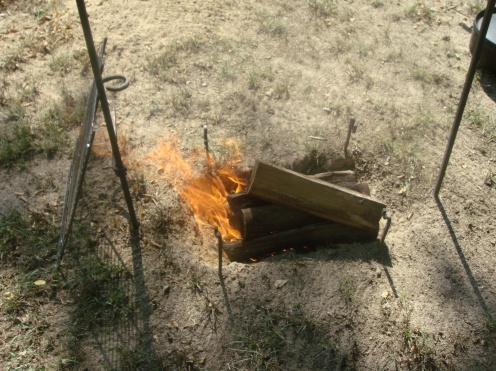
Once your fire is built, set your Dutch oven next to the fire in order to pre-heat it. Turn the Dutch oven occasionally to heat it evenly.
When the fire has burned down pretty good, it is time to mix up your biscuit dough. This recipe is for a small batch that will feed two or three people. Start by placing two cups of self-rising flour in your mixing bowl.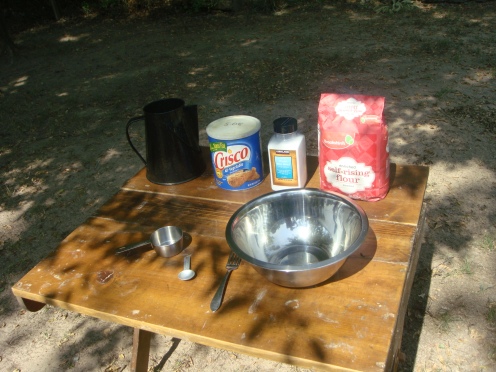
Add one teaspoon of salt and mix it into the flour.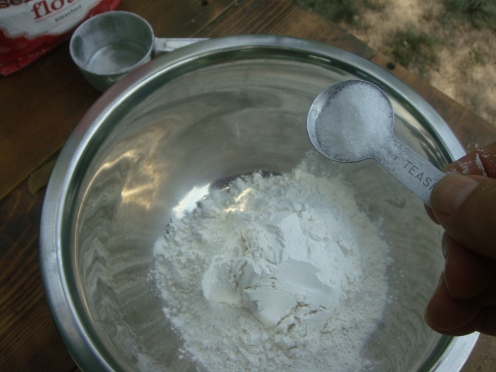
Next add ½ cup of shortening or lard (for a better biscuit use half butter and half shortening).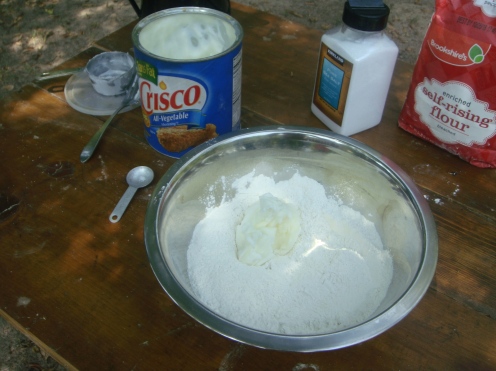
Use your fork to cut the shortening into the flour. 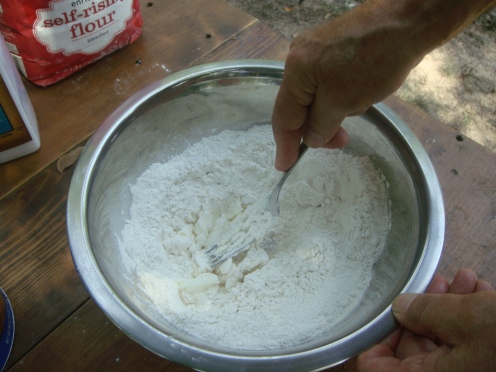
Mash and mix until the shortening is evenly distributed and the flour looks like coarse sand.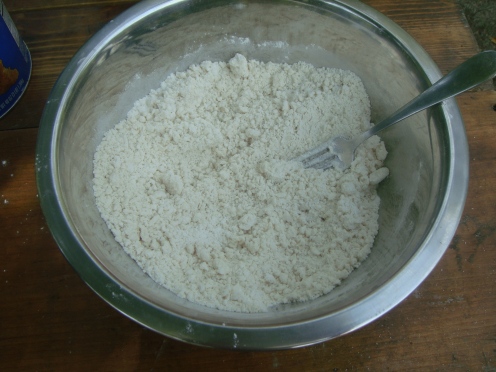
Now you can start adding water (or milk or buttermilk for a tastier biscuit). Add the water a little at a time, mixing as you go.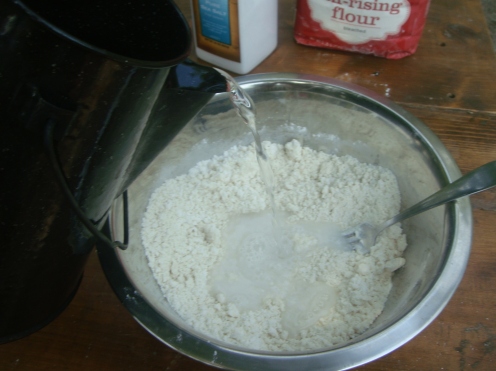
Keep adding water until you have a dough that doesn’t stick to the mixing bowl or your hands.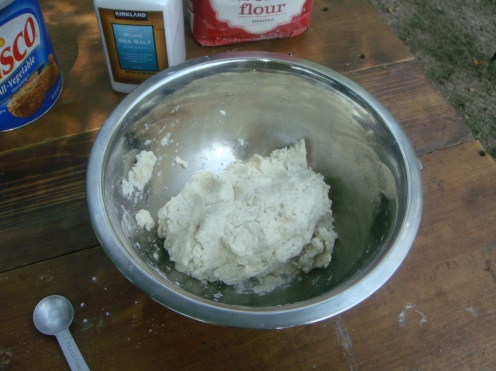
Let the dough rest for a few minutes while you grease your biscuit pan with shortening.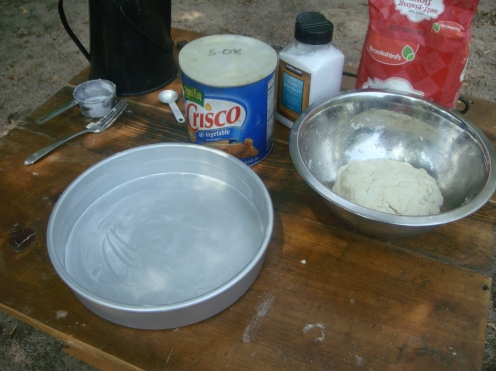
For quick and easy camp biscuits I like to tear off chunks of the dough, press them into a ¾ inch thick disk with my fingers, and place them in the biscuit pan. If you’re cooking in the kitchen, you can roll the dough out on a floured cutting board and cut the biscuits out with a biscuit cutter. They don’t taste any different. They just look prettier.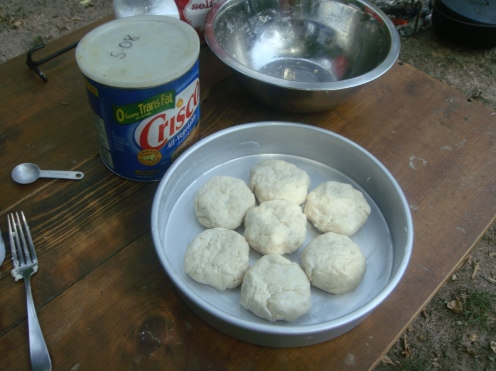
Now turn to your fire and shovel out a bed of coals to set your Dutch oven on.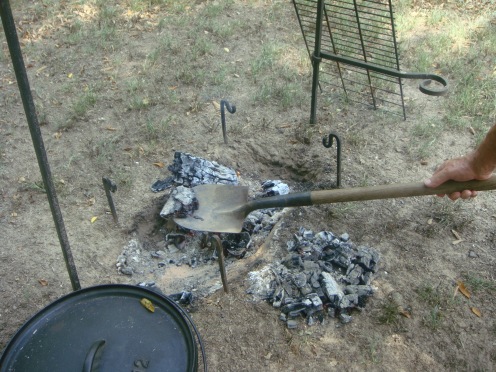
Put your three lug nuts in the bottom of the Dutch oven,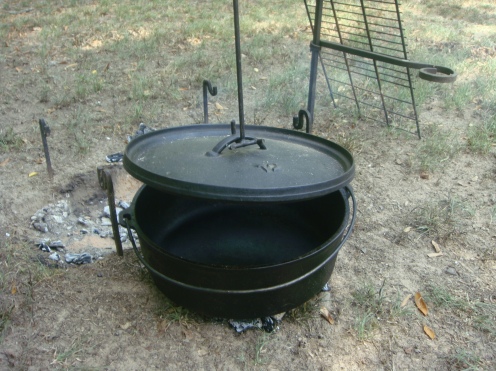
And set your biscuit pan down into the oven. The lug nuts will hold the pan up off of the bottom of the oven and allow the heat to circulate around the pan better.
Put the lid on the Dutch oven and shovel an even layer of coals onto the lid.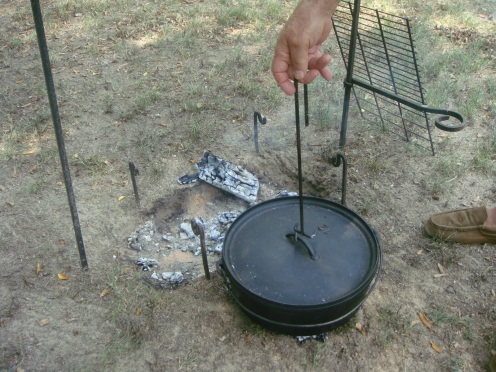
Let the biscuits cook for ten minutes, then use your lifter to rotate the Dutch oven 180 degrees one direction. Then lift the lid and rotate it 180 degrees back the other direction. This is, again, to try and keep the heat distributed evenly.
Let the biscuits cook for another ten minutes then carefully remove the lid. 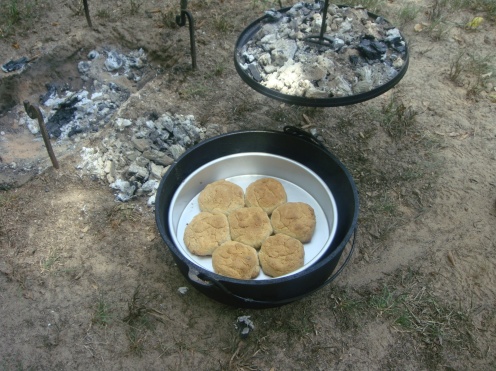
You should now have a nicely cooked pan of hot biscuits waiting for some butter and jelly or maybe a nice ladle full of sausage gravy.
If you’re cooking outdoors it is important that your cookware is durable. Cast iron and stainless steel are the materials of choice. Those nice pottery bowls and Teflon pans may be okay for the kitchen, but they have no place around a campfire.
Cast Iron Cookware
I have four pieces of cast iron cookware in my cooking gear. I have a 10” cast iron pot with a bail and lid. This is convenient to hang from an “S” hook over the fire. I use it to cook things like stew, chili, chicken and dumplings, pinto beans, and etc.
A 12” Dutch oven is handy for baking biscuit, bread, pies, and cobblers. It or the hanging pot are also good for cooking large chunks of meat like a pot roast.
I have a round 12” griddle that is great for cooking pancakes, corn cakes, and tortillas. It’s also good for cooking bacon, sausage, spam, and sliced ham.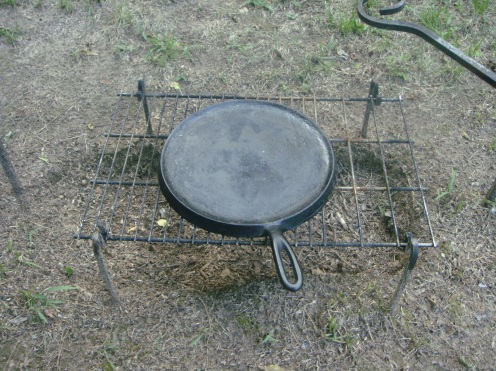
I actually have two different sizes of cast iron skillets, but I usually just stick to a standard 10” skillet for most situations. If I’m cooking for a pretty good crowd I have a larger 12” skillet. These are great for cooking eggs and for frying chicken or fish.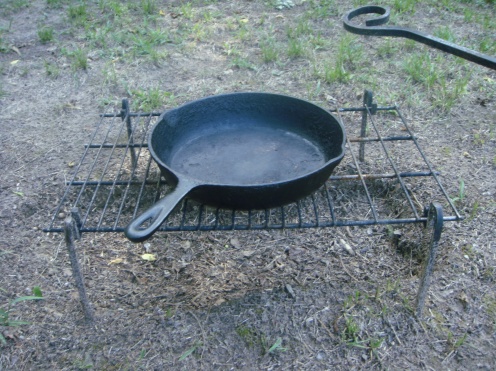
Stainless Steel Cookware
A large stainless steel lidded pot is handy for cooking vegetables, soups, rice, or anything else that you would cook in a pot on your stove. I have such a pot that I use for large groups, but I don’t use it often.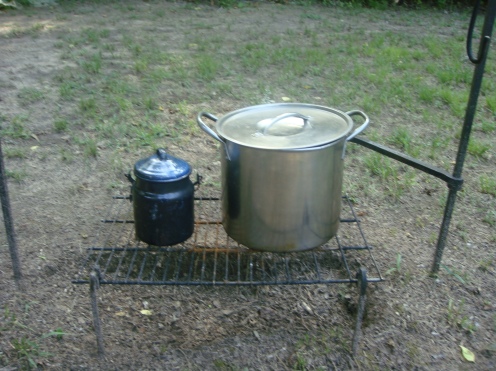
I use a deep, round baking pan that fits inside my Dutch oven when I cook biscuits or bread. Some people cook biscuits and bread directly in the Dutch oven, but I use this pan and set it on three steel hex-nuts that elevate it about a quarter inch from the bottom of the Dutch oven. I find that this cooks my bread-stuffs more evenly and avoids scorching the bottoms. The pan pictured here is actually a new one. My old one was fairly shallow, and I’m looking forward to using the new pan.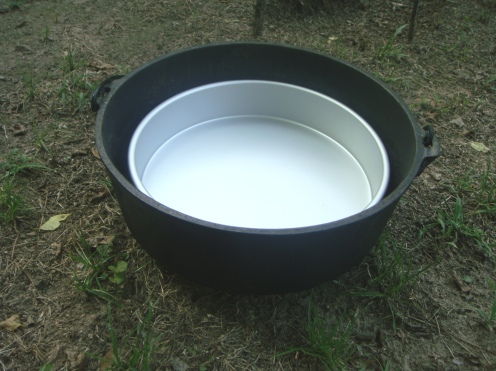
I also have a big stainless steel bowl that serves as my wash basin for doing dishes. It also doubles as my dough bowl for mixing up bread dough and letting it rise.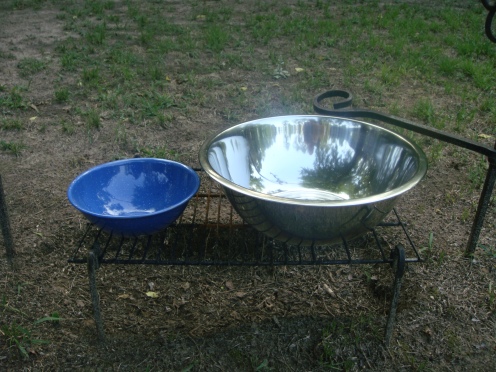
Enamelware
I have an enamelware coffee pot that has seen a good number of campfires. Some people cook camp coffee by putting the grounds directly in the water, boiling it up, and then throwing in a cup of cold water to make the grounds settle. Maybe you can make this work, but I always end up straining coffee grounds through my teeth. I prefer to use the removable basket and percolator tube to make my coffee.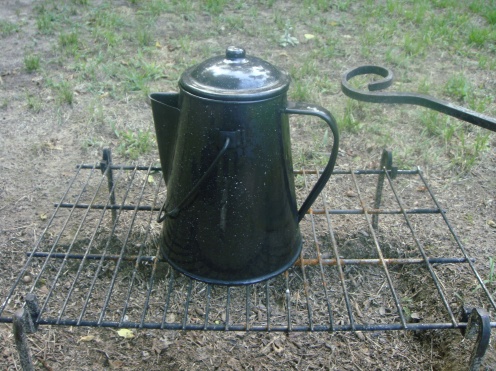
A medium size enamelware bowl is used for mixing biscuit dough, pancake batter, and etc.
I use my small enamelware hanging pot to cook vegetables, soups, and etc. I find that I use it much more often than my large stainless steel pot.
I also have an enamelware lid that fits over my 10” skillet.
Kitchen Utensils
You can get as complicated as you want on utensils. I keep it pretty simple. The main rule is “long handles.” You want to be able to reach out over that fire without singing the hair off of your hand. I use a big butcher knife and a small paring knife. Also pictured is an old-time can opener.
A pair of meat tongs and a long handle fork are also handy; especially if you are cooking straight on the grill.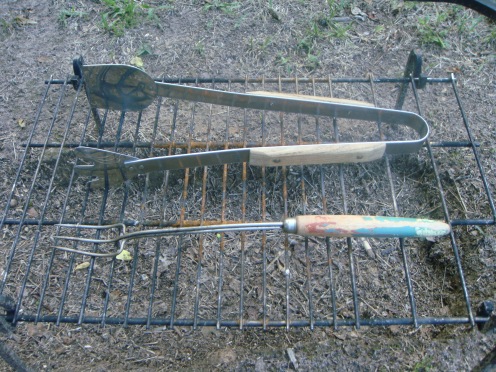
You’ll need a spatula, a ladle, and a spoon to cook with, and that weird looking thing on the right is an absolute necessity if you’re using a Dutch oven. It’s called a lid lifter.
The last item on the list is a blow-pipe. This is used to direct air at your fire to help build the flame. It concentrates the stream of air much better than bending over and blowing through your lips.
Well, that’s it for cookware. As you can see I didn’t exactly drive over to William’s Sonoma and buy my stuff. It’s mostly hand me downs, garage sales, and thrift stores; but it works, and it has turned out some good camp meals over the years.
In any long-term grid down situation it will eventually become necessary to cook on an open fire. This is, of course, assuming that you don’t have an old time wood-burning cook stove. I personally don’t have a wood burning cook stove. I have a propane cook stove, and I have enough propane to operate said stove for about a year. This makes it easy to deal with run-of-the-mill power outages, but for a super long term emergency situation the propane will run out. In order to keep cooking in such a situation I have put together a pretty good outdoor cook set. This is not the kind of equipment that you can throw in a bug-out bag. It is heavy, it is durable, and it will last for generations; but it is not very portable unless you have a vehicle. I’d like, in this post, to tell you a little bit about my outdoor cooking equipment; so without further delay, let’s get started.
The Grill
The most basic component of your outdoor cooking set-up is the grill. Grills come in many sizes, shapes, prices, and configurations. There are many places that you can purchase a good cooking grill. You can get a grill at a sporting goods store or a big-box store like Wal-Mart. I actually bought my 12” X 18” grill at a home building supply store for about $10 US. I think it was a replacement grill for an outdoor barbecue.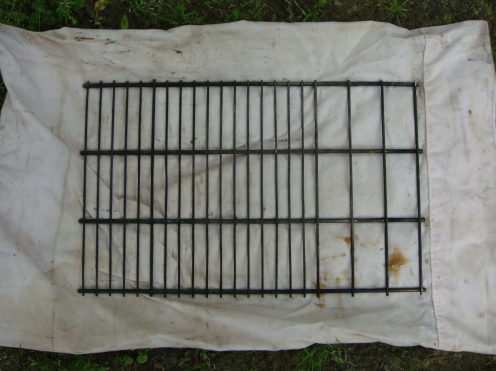
To support the grill I made four legs by bending some 3/8 inch bar stock as illustrated in the photo below.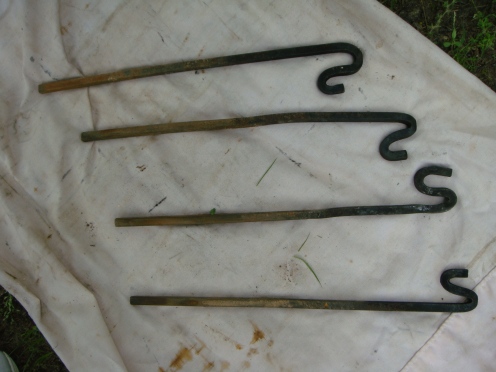
To set up the grill requires a small camp shovel and a hand axe or hammer. I use a hand axe because it is more multi-purpose than a hammer.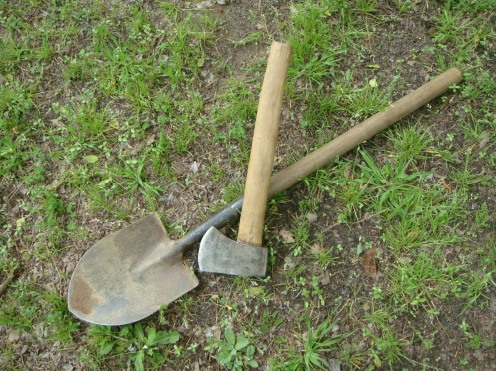
Start by digging a fire pit that is about four or five inches deep and slightly smaller than your grill. One end of the fire pit should slope up to ground level so that you can feed firewood down under the grill.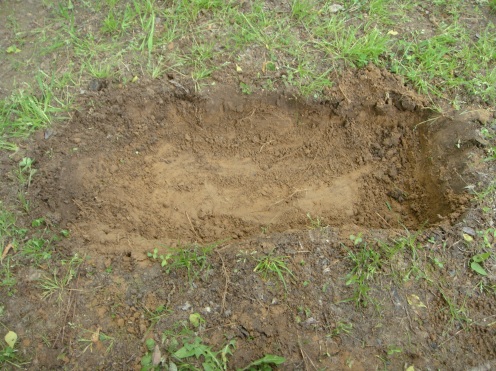
Lay your grill down over the fire pit so that you can determine where to hammer in the legs, and use your hand axe to start the legs into the ground. Set your grill on the legs and tap each leg in so the grill is as close to level as you can eye-ball. You should end up with about eight or ten inches of space between the bottom of the fire pit and the surface of your grill. This will leave enough room to get a good fire going under the grill.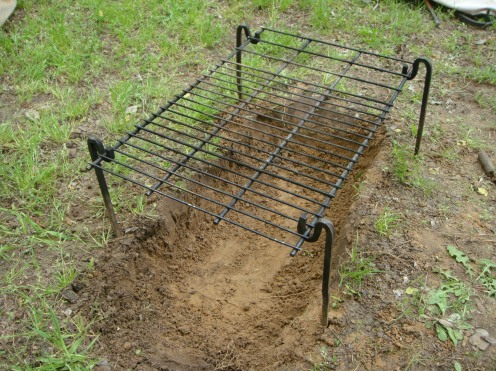
To fine tune the leveling process, set a pan of water on top of the grill and tap the legs down until the water is level in the pan. You may not think it’s important to level your grill, but it’s really annoying to try and cook something in a frying pan and have all the grease run over to one side of the pan.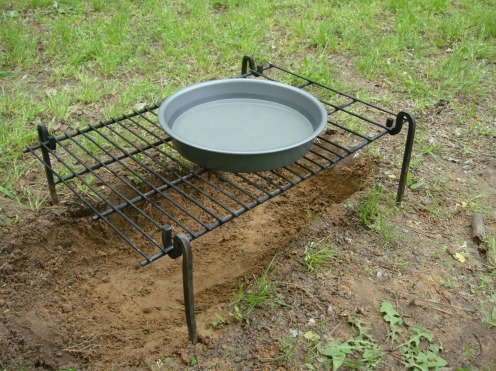
Fire Irons
A set of fire irons is a metal framework that is used to suspend cooking pots or a coffee pot over your fire. 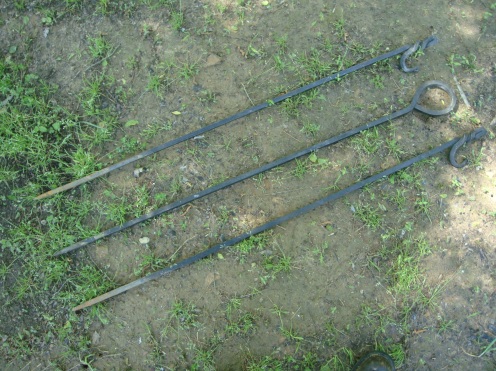
Fire irons are not as easy to find as a grill. I’ve never seen fire irons in a regular retail store. You can probably find fire irons on-line if you want to go that route. Any good size mountain man rendezvous or other re-enactor’s event will probably have a blacksmith or two that sells fire irons. I had my set made by a blacksmith friend. Blacksmithing is no longer a common profession, but if you search on- line you might find one near you. Of course any welder can cut, heat, and bend up some 5/8” bar stock and make you a set.
One part of the fire iron set that is pretty hard for an amateur to make is the crane. 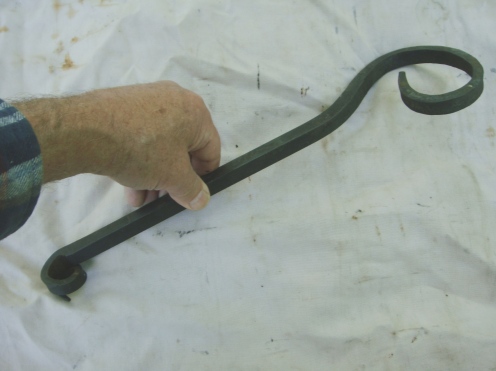
A crane is a device that is attached to one of the uprights and can be moved up and down and swung from side-to-side. A cook pot or a coffee pot can be placed on the crane and then the crane can be adjusted to keep the pot warm without any continued cooking. The good news is that a crane is not really a super important part of the fire iron set, so if you don’t have one it’s really not a big deal.
To set up fire irons you simply drive the uprights into the ground on each end of the fire pit and place the cross piece on top. If you use a crane remember to place it on one of the uprights before you drive the upright into the ground. I like to place the uprights out as far as possible from the ends of the fire pit so that I have a little extra room at each end of the top piece to hang my griddle, my cooking utensils, and etc. This also leaves better access for adding more wood to your fire.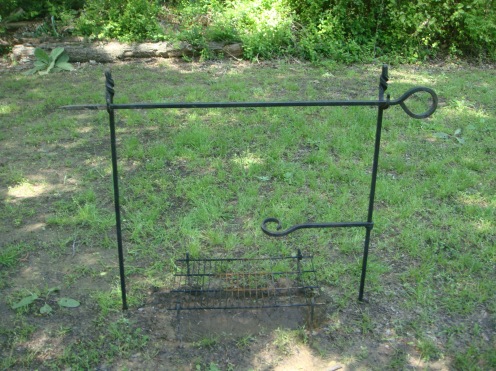
One final item or really items that you’ll need for your fire iron set is some pot hooks. These hooks are used to suspend cook pots from the top piece of your fire irons. Pot hooks can be fancy black smith items, or they can simply be bent up out of ¼” round stock.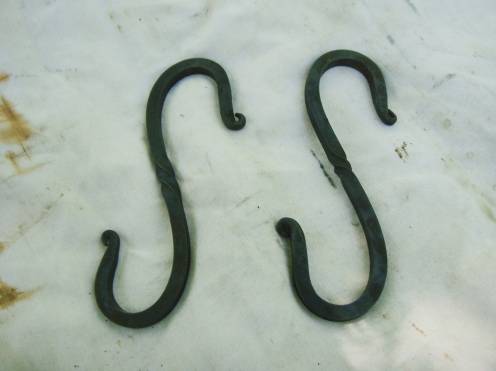
Whichever kind you use be sure to get them in varying lengths so that you can adjust your pots to different heights above the fire.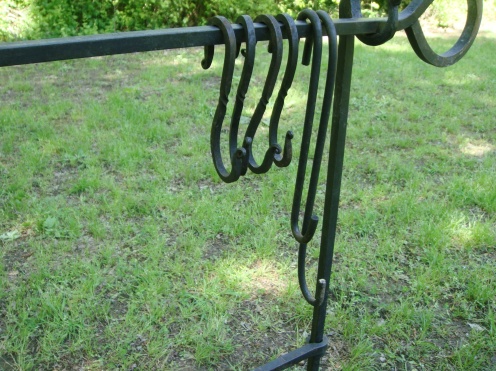
In my next post I’ll familiarize you with the various pot, pans, utensils, and accessories used in out-door cooking.
The Pole Framework Set-Up
I wouldn’t waste the time or energy to do this set-up for a one night stay, but if you have a lot of materials available and if you are going to be in the same location for several nights, you may want to set up a pole framework for your tarp.
To do this set-up you will need a ridge pole that is a little longer that the diagonal length of your tarp, and you will need a couple of forked sticks that are about six feet long. You don’t necessarily have to have forked sticks as you should have plenty of cordage in your kit that can be used to lash together some straight sticks into a bi-pod that supports the ridge pole. You will also need a short piece of cordage to attach the front of the tarp (one of the cords used to tie around your kit will work for this), and you will need seven tent stakes.
First set up the framework as pictured below.
Here is how you can lock the forked sticks and ridge pole together.
Now you drape the tarp over the ridge pole and stake down the back of the tarp.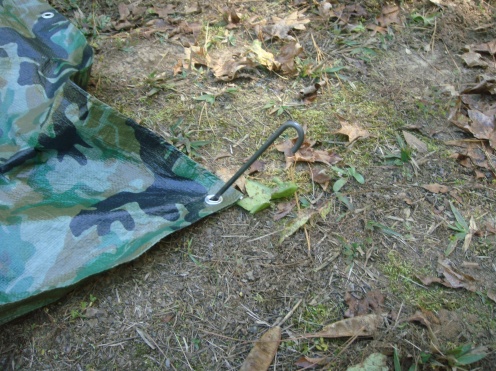
Pull the front of the tarp up and tie it off to the ridge pole and forked sticks then stake down the sides.
The One Stick Set-Up
If you are in a situation where you have very limited vegetation you can set up your tarp with only one stick. In the example below I have pitched the tarp using only my walking stick which is about five feet long.
In addition to the single stick you will need two of the six foot pieces of cordage from your kit and all of your tent stakes.
First you need to stake down the back of the tarp.
Then you need to attach the front of the tarp to your stick. In this instance I used the lanyard on my walking stick and looped it through the front grommet on the tarp and then back over the walking stick. If you use a found stick you will need to use a short piece of cordage to tie the tarp off to the stick.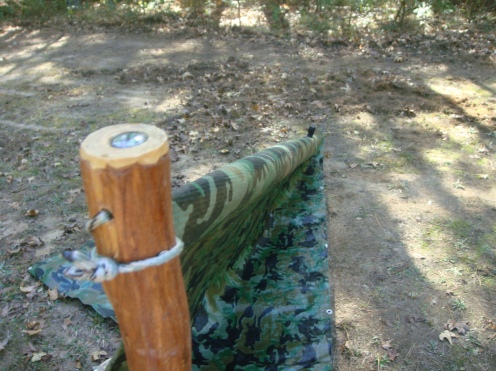
Now pull the tarp forward to tighten up the ridge line and attach your two, six foot pieces of cordage to the top of the stick.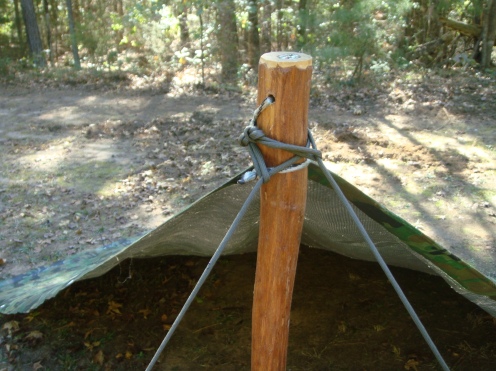
This next step is easier to do if you have two people so that one person can keep the stick in place while the other person sets the tent stakes, but you can do it alone as I did in this instance. So, what you do is drive in a couple of tent stakes that are about 45 degrees on each side of the stick. The stakes need to be about four feet out from the stick. 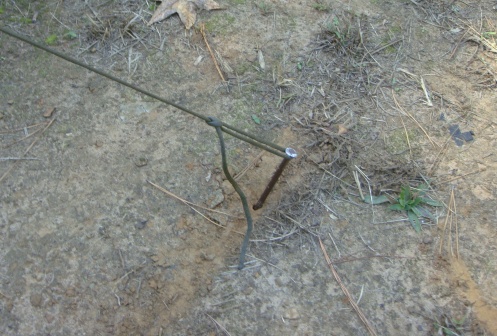
Tie off your guy lines to the stakes to hold the stick upright. Make sure that the ridge line of your tarp is tight. Use your remaining tent stakes to stake out the sides of the tarp and you’re done.
I started using this particular tarp set-up years ago. At the time everyone I knew called it a diamond fly. Today the term plow point seems to be more popular, but which ever name it goes by this is definitely one of the quickest and easiest set-ups that you can use. If you tie off the front of the tarp to a tree you can create a good, rain proof shelter in ten minutes or less. If you don’t have a convenient tree to use it may take a few minutes more.
Here’s the equipment you will need from your shelter kit:
You will, of course need your tarp.
You will need one of your small, pre-made loops and your bungee cord
You will also need one long stake and six short stakes.
Lastly, you will need a couple of your six foot long guy ropes and one of the little two inch sticks.
Now let’s set up our diamond fly:
First lay out your tarp as pictured below. It’s best if you can find a location with one tree at the front of the tarp and another tree at the back. In this case the front of the tarp will be attached to the tree on the left.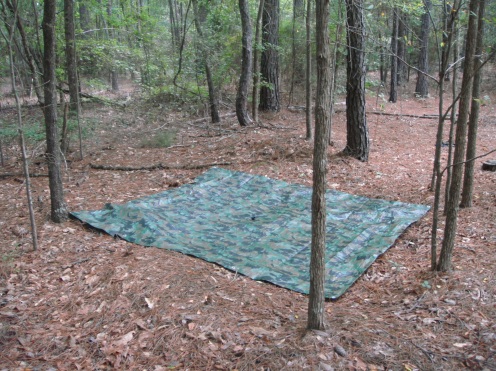
Next, attach your small loop to the front corner of the tarp.
Use your bungee cord to attach the front of the tarp to the tree. You can vary the height according to conditions, but I usually set the front at about chest height.
Grab the back corner of the tarp and pull it back toward the back tree. Use your long stake to stake the tarp down good and tight so that you have a nice diagonal ridge line.
Use your six short stakes to stake out first one side of the tarp and then the other. You want to pull the sides out as far as you can without making the ridge line start to sag.
You could stop at this point and call it home, but it only takes a minute to make your set-up a little better. What we’re going to do is attach a guy line between the center loop of the tarp and the back tree. This will pull the ridge line up a little bit and keep it from sagging down in the middle. If it’s very far to the back tree you may need to tie two guy lines together to make a long cord. Here’s how you set up the guy line:
Attach one end of the guy line to the tarp’s center loop as pictured below.
Pull the other end of the guy line back to the back tree and wrap it around the tree a couple of feet higher than your bungee cord is attached to the front tree. Tie the guy line off using the simple quick release knot pictured below. Notice that the small stick is inserted into the finished loop to prevent accidentally untying the knot.
That’s it. You’re ready to move in for a good night’s sleep, and the next morning you can break camp as quick as you set it up.
When some people are camping they like to be in a tent; other people like to sleep in the open or under a tarp. I am in the later group. If the weather is nice, I like to sleep in a hammock or a sleeping bag and bivy sack under the stars. If the weather is threatening rain or if it is cold; I like to sleep under a tarp. There are several reasons that I prefer a tarp. For one, tarps are very light to carry. My tarp set-up including lines, stakes, etc. weighs 3 lbs. 10 oz.(that’s about 1.65 kilos for my non-American friends). For another thing, a tarp is very versatile as far as different set-ups. A tarp can be set up to take advantage of a fire for additional heat in the winter, and it can be suspended overhead to allow better air circulation in the summer. A tarp also allows better exterior visibility than a tent. And lastly, a tarp can be used in conjunction with a hammock, something that is not possible with your average tent.
I’m going to do a couple of posts on my favorite tarp set-ups; but before I do that, I thought it might be good to show you my bug-out tarp kit. Some might say that I include too much in my kit. Some of the items could be foraged or manufactured in the wild. This is true. You could, in fact, build your entire shelter from foraged materials, and I encourage you learn how to do just that. But, everything about survival is a trade-off. You have to constantly be thinking about how much space you have in your pack, the weight of items that you carry, the time necessary to locate and/or make items in the wild, and the calories burned carrying items as opposed to the calories burned making items. I consider the small amount of added weight in my kit to be negligible compared to the time and calories used to do things like cutting tent stakes. My whole tarp kit weighs three pounds and ten ounces and rolls up into a nice 24” by 6” bundle.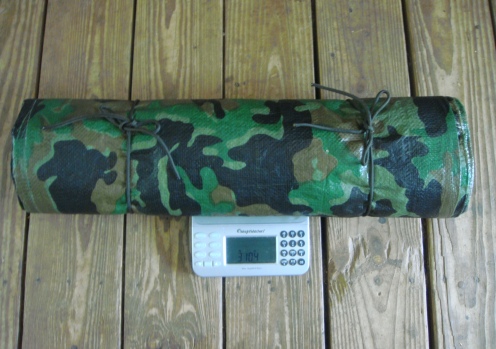
Using the items in this kit I can make my three favorite tarp set-ups without any additional materials. So anyhow, this is what’s in my kit.
Item number one is my tarp. It is an inexpensive vinyl tarp that you can get at Harbor Freight or Wal-Mart. The tarp is about eight by ten feet. I used tarps like this for several years; but I recently modified it, as outlined in the previous two posts, by painting the inside with reflective aluminum paint, and I have added a center loop to the outside.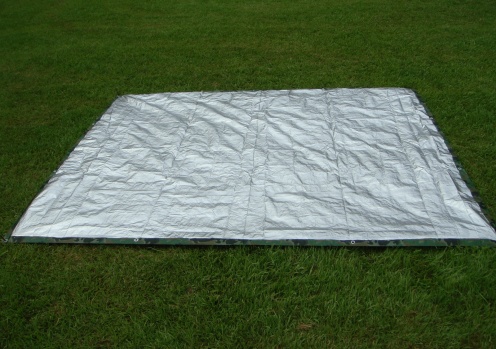
Some set-ups require a ridge line. I carry a twenty-five foot piece of 550 para-cord to use as a ridge line. It has permanent loop tied into one end. The ends of all of my cords have been melted to prevent fraying. Be sure that you use good, military grade para-cord, not the cheap stuff from the craft store.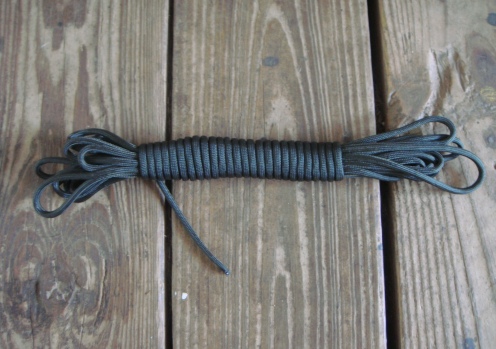
A 40 inch long bungee cord is handy for quickly setting up plow-point shelters (more on that in the next post).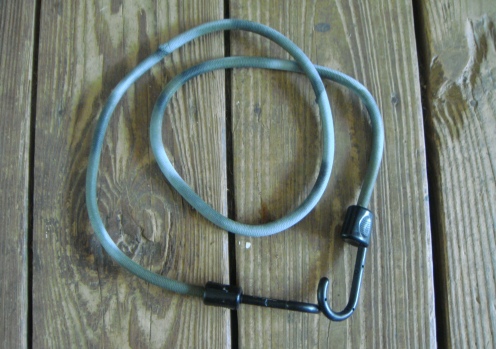
I carry eight guy lines that come in handy for some set-ups. Each guy line is six feet long with a permanent loop in one end.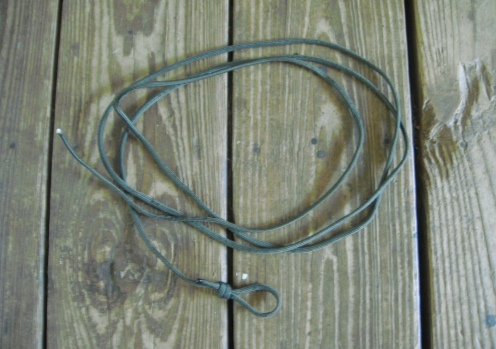
My kit includes eight tent stakes. Two on them are about eleven inches long and made of steel. 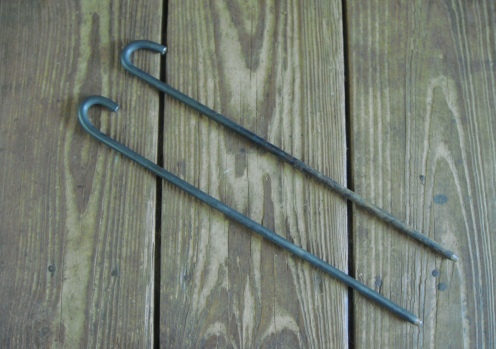
The other six are seven inches long and made of aluminum. These are actually aluminum nails that are used to hang rain gutters. You can buy them at the hardware store for about fifty cents each. 
I keep them bundled together with one of those thread covered rubber hair bands.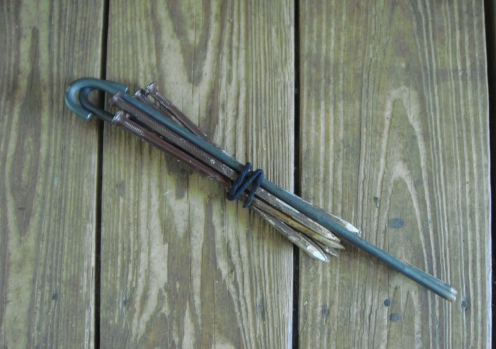
Some small loops of para-cord come in handy for certain set-ups. I carry six pre-made loops bundled together with a hair band.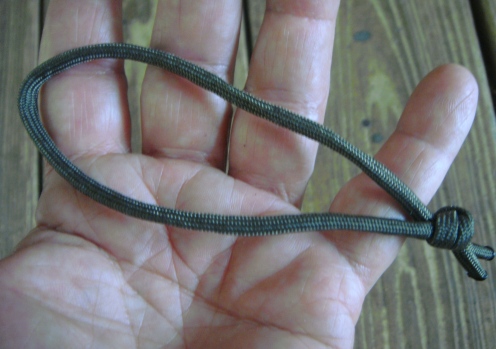
I carry four little sticks that are pre-cut to about two inches long. These are used for tarp attachments and to secure easy release knots (more on this later).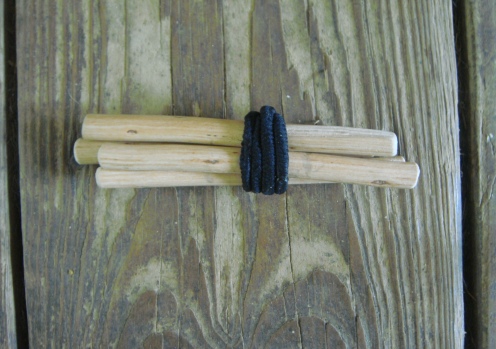
All of the lines, stakes, and etc. are stored in a small stuff-sack.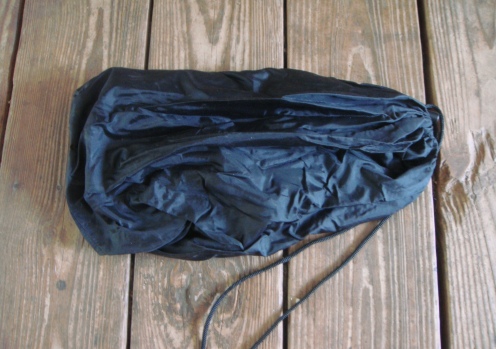
The last item in my kit is a piece of camo netting that I can drape across the front of my shelter to help conceal it.
So, that’s my tarp kit. In subsequent posts I will show you how to make several tarp set-ups using the items in this kit.
Most vinyl tarps have grommets around the outside edges but few, if any, have loops on the back of the tarp. A center loop can be very helpful with tarp set-ups like the diamond fly, also called the plow point. The center loop allows you to attach a line in the middle of the tarp and give a little lift to take the sag out of your ridgeline. But, my $15 Harbor Freight tarp didn’t have a center loop; so I decided to attach one myself.
I have added loops to canvas tarps by stitching and then re-waterproofing the affected area, but I was concerned that this wouldn’t work on vinyl. I was afraid that it would either leak or tear out too easily, so I thought that maybe I could glue the loops on for a stronger and more leak-proof bond. I found a You Tube video by a young fellow who goes by “Brave the Wilds” in which he glued on tarp loops (check out his You Tubes at www.youtube.com/user/bravethewilds), so I followed his lead and proceeded as follows.
To do this project you will need the following:
Tape measure
Marking pen
Woven nylon webbing
Scissors
Ice pick and heat source
Straight pin
Sewing machine or needle and thread\
Medium grit sand paper (one small piece)
Rubbing alcohol
Cotton ball
Two part, five minute epoxy
Some weights
First cut a piece of nylon webbing that is about six to six and one half inches long.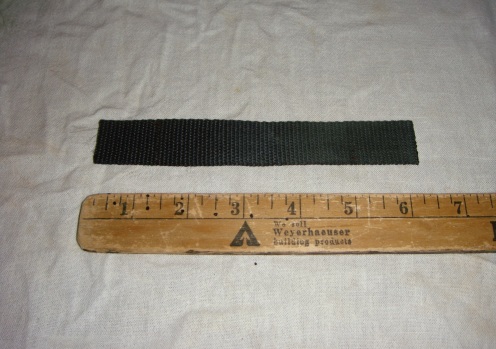
Next, heat the ice pick in a flame and use it to gently melt the ends of the webbing. This will keep it from unraveling.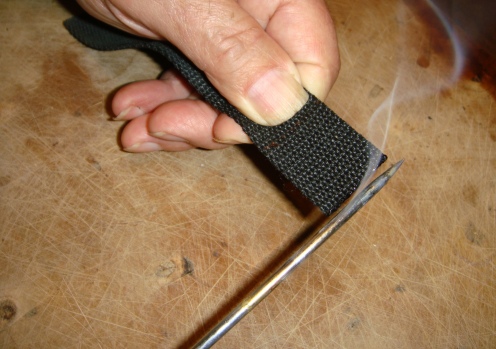
Fold the webbing in half and pin it about an inch from the loose ends.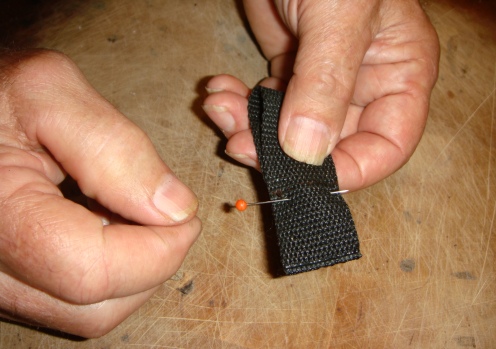
At this point you can sew across the loop by hand of with a sewing machine. My wife sewed it for me on her machine, and she went back and forth about three times to make it good and strong.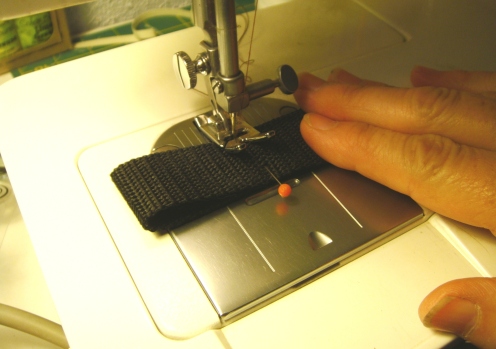
So now you have your loop and it’s time to prepare for gluing.
Lay your tarp out on a flat, hard surface and set the loop down on your center mark.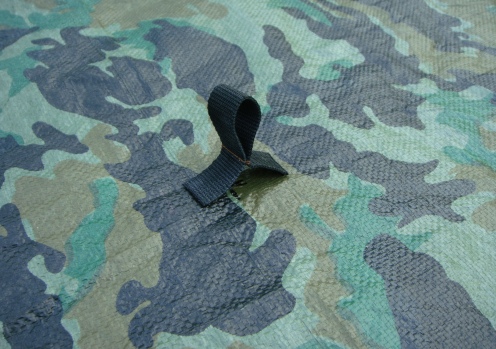
Use your marking pen to outline the area to which the loop tabs will be glued.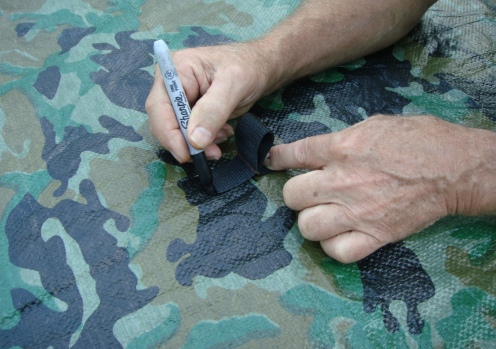
Use the sandpaper to very lightly rough up the surface of the tarp and the tabs of the nylon webbing. This will help the glue adhere better.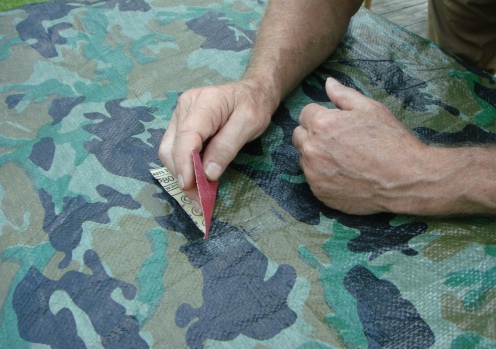
Dampen the cotton ball with rubbing alcohol and clean the surface of the tarp and the loop tabs. Let them dry for a few minutes.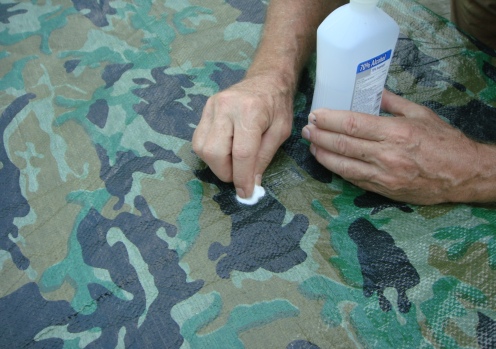
Mix the five minute epoxy according to directions.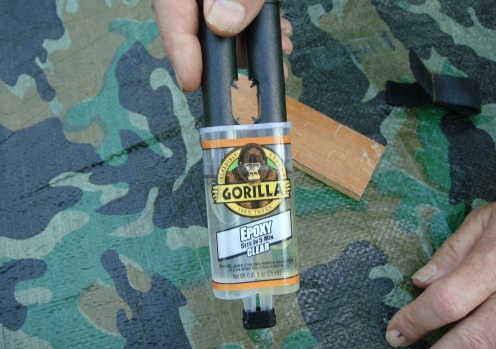
Apply epoxy to the tarp trying to stay inside the outline that you have drawn. Get a good coat of epoxy but don’t overdo it.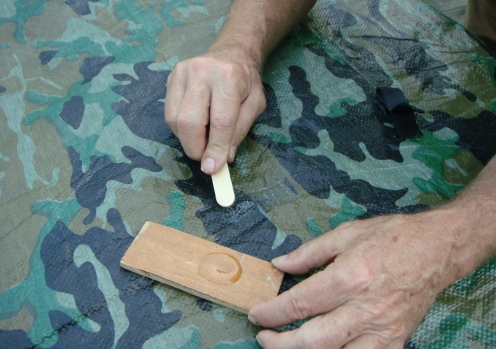
And press the tabs into place.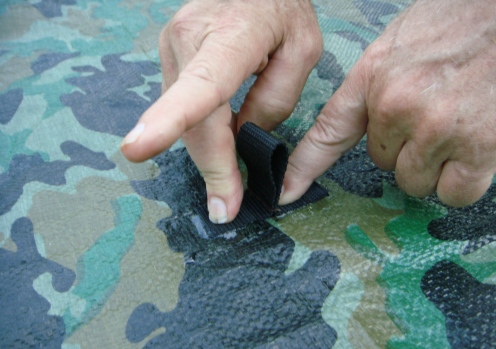
Place some weights on the top of the tabs to press them down but don’t get epoxy on the weights or you may end up with them glued to the tarp. A couple of small pieces of wax paper between the tabs and the weights might help prevent accidental gluing.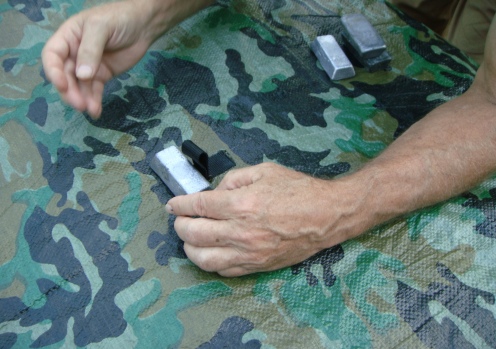
Note that 5 minute epoxy sets in 5 minutes but it is not cured and strong. You should leave the weights in place for at least over-night to make sure that the loop is firmly attached.
When you remove the weights you will have a nice web loop attached to your tarp.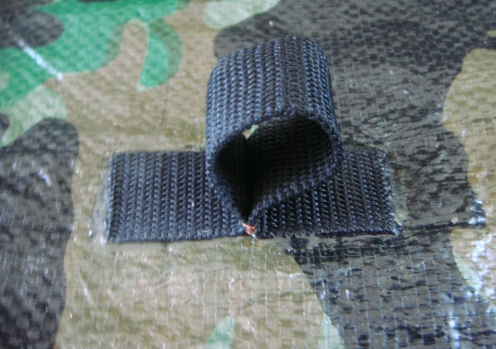
Here are a couple of pictures of the tarp loop in use. It seems to be firmly in place and doing its job.